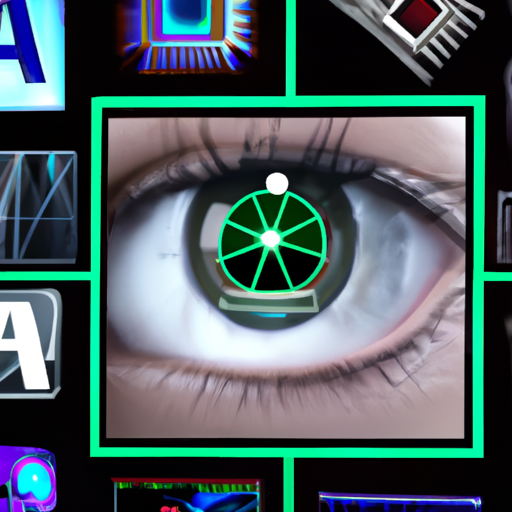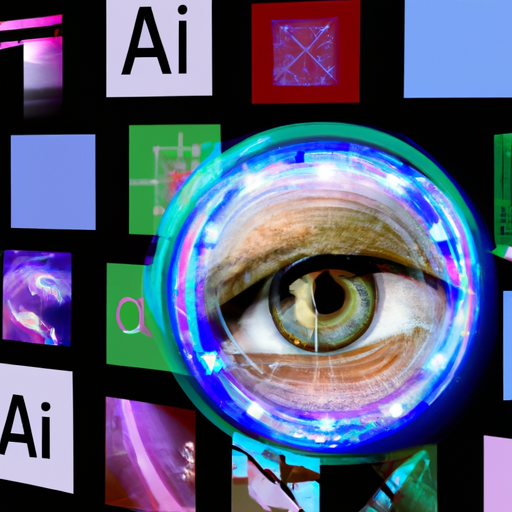Image Recognition Software
Have you ever pondered on the intricacies and technological milestones needed to develop image recognition software? This kind of advanced technology, capable of multiple applications ranging from face detection in phone cameras to self-driving cars, is certainly intriguing and complex. The aim of this article is to provide you with a meticulous understanding of image recognition software – how it works, its various applications, as well as its potential and future directions. As you delve into the subsequent parts of this discourse, you will certainly increase your knowledge on this practical and fascinating technological development.
Behold the progressive world of Image Recognition Software, a significant area in the field of Artificial Intelligence. As you browse through photographs and videos on your device, have you ever thought about how your device can recognize and categorize these images? Your device uses a powerful tool known as an Image Recognition Software. This incredible software allows computers to recognize and understand images in the same way that humans do. So, prepare to go on an enlightening expedition that unfolds the world of Image Recognition Software; its composition, algorithms, applications, potential uses, and the future it holds. By the end of this article, your understanding and appreciation will undoubtedly be enriched.
Understanding Image Recognition Software
As the world continues to evolve, we are witnessing a significant shift in technological advancements. Among these developments, Image Recognition Software is taking center stage. You may be wondering what exactly this software is and how it works. This article delves into all you need to know about Image Recognition Software.
Definition and Basic Function of Image Recognition Software
Image Recognition Software is a type of computer vision technology that identifies and processes visuals in images, videos or in a real-time camera view using AI and machine learning. Its main function is to perceive images, analyze their content, and make informed decisions based on the data extracted from those images.
How Image Recognition Software Works
Image Recognition software works by breaking down an image into tiny elements, often termed as ‘pixels’. Using machine learning algorithms, these pixels are examined for patterns, and these patterns are used to understand and classify the image content. An example of how the software identifies objects can be described using facial recognition technology. In this instance, the software scans an individual’s face, pinpoints unique facial features, analyzes these features and compare them to a database of faces in order to provide a match.
Major Uses of Image Recognition Software
Image Recognition Software can be found in several applications. Some of these include Automatic Number Plate Recognition, facial recognition systems, automated teller machines (ATMs), and in the healthcare industry for disease identification. Even more, social media platforms also employ this software for features such as automatic tagging.
Types of Image Recognition Software
The types of image recognition software are as multifaceted as their applications. They range from Machine Learning–Based Software to Neural Networks-Based Software, and Facial Recognition Software.
Machine Learning-Based Software
Machine Learning-Based Software involves the use of algorithms to train a model that can make predictions or decisions without being explicitly programmed to do so. Machine learning-based software learns and adapts to the data it is exposed to, improving its performance over time.
Neural Networks-Based Software
Neural Networks-Based Software simulates the functioning of a human brain to process information. It constists of layers (input, output and hidden layers) of nodes which are interconnected, allowing complex processing and problem-solving.
Facial Recognition Software
As the name suggests, this software identifies and validates an individual’s face using their unique facial features. Facial recognition software is widely used in security systems, authentication processes and surveillance systems.
Advancements in Image Recognition Software
Technological evolution has paved the way for many advancements in Image Recognition Software. These include improvements in accuracy and speed, incorporation of augmented reality, and integration with IoT (Internet of Things) devices.
Improvements in Accuracy and Speed
Advancements in machine learning and AI have allowed Image Recognition Software to make more accurate predictions and faster processing times.
Incorporation of Augmented Reality
Incorporation of augmented reality has enabled Image Recognition Software to overlay digital information onto images in real time, enhancing the user experience. This is widely used in gaming, navigation, and advertising industries.
Integration with IoT Devices
Integration with IoT devices has broadened the range of applications for Image Recognition Software. It can now be used in home and industrial automation, security systems, and more.
Benefits of Using Image Recognition Software
The potential benefits of using Image Recognition Software are extensive. From enhancing security measures to improving user experience and increasing efficiency, Image Recognition Software’s impact has been transformative across various industries.
Enhanced Security Measures
Image Recognition Software, especially facial recognition technologies, can offer improved security measures by providing real-time alerts and helping in identifying potential security threats.
Improved User Experience
This software plays a crucial role in improving user experience by offering personalized recommendations, allowing voiceless commands, and automating routine tasks.
Increased Efficiency in Various Industries
Image Recognition Software helps increase efficiency by automating manual tasks, reducing errors, and increasing productivity across various sectors including healthcare, retail, and manufacturing.
Concerns and Challenges Associated with Image Recognition Software
While Image Recognition Software offers numerous benefits, it does raise certain concerns and challenges as well. These range from privacy and data security issues to potential misuse of technology and limitations in accuracy.
Privacy and Data Security Issues
Privacy concerns arise as the software collects and processes personal data. Additionally, data security is another concern, as information could be potentially compromised if a system is hacked or misused.
Potential Misuse of Technology
There’s always the risk of such powerful technology being misused for malicious intent, including identity theft.
Limitations in Accuracy/Lack of Context
While the software has significantly improved over time, there still exists a margin of error which could result in false positives/negatives. Also, the software might lack understanding of the context of certain images.
Application of Image Recognition in Different Industries
Image Recognition Software finds its applications in many industries such as healthcare, automotive, retail, and security/surveillance.
Healthcare
In healthcare, Image Recognition Software is used for disease detection and diagnosis, patient monitoring, and even in surgical procedures.
Automotive
In automotive, the software is utilised in self-driving cars, plate number recognition, and traffic surveillance.
Retail
Retail businesses use the software for inventory management, customer behavior analysis, and targeted advertising.
Security and Surveillance
Image recognition software is extensively used in security and surveillance applications including facial recognition systems, biometric systems, and surveillance cameras.
Future Trend in Image Recognition Software
Current trends indicate an exciting future for Image Recognition Software. We’re likely to see more integration with big data, advancements in deep learning, and the fusion of Image Recognition with AI.
Integration with Big Data
The integration of Image Recognition Software with big data will enable more informed and accurate decisions, thus improving performance.
Advancements in Deep Learning
Deep learning, a type of machine learning technique that uses neural networks, is progressing rapidly. These advancements will enhance the software’s ability to learn from and interpret images with improved accuracy and speed.
Combining Image Recognition and AI
The fusion of Image Recognition and AI enhances the ability of the software to interpret and understand images in a more complex and nuanced way, thus opening up new possibilities.
Choosing a Right Image Recognition Software
Choosing the right Image Recognition Software requires understanding your specific needs and capabilities. Knowing what to consider when selecting software and being aware of the most popular software in the market will guide you in making the best choice.
Considerations When Choosing Image Recognition Software
When choosing Image Recognition Software, it’s essential to consider factors such as the software’s functionality, compatibility, ease of use, accuracy, and the customer support provided.
Popular Image Recognition Software in Market
Some popular Image Recognition Software include Google Cloud Vision, IBM Watson Visual Recognition, Amazon Rekognition, and Microsoft Azure Computer Vision among others.
How to Implement Image Recognition Software
Implementing Image Recognition Software requires careful planning and execution, as well as ongoing training and support to ensure optimal use.
Steps to Implement Image Recognition Software
From choosing the right software and planning its implementation to training the users and going live, every step is crucial.
Training and Support Available
Most software providers offer comprehensive training and support to ensure smooth implementation and effective use of their software.
Conclusion
With the ever-increasing reliance on technology, the significance of Image Recognition in today’s world cannot be underscored enough. As it continues to evolve to meet the dynamic needs of various industries and users, the future prospects for Image Recognition Software appear bright.
From facial recognition, surveillance, disease identification in healthcare, to providing personalized shopping experiences in retail – the capabilities of Image Recognition Software are revolutionary. While we must address the associated challenges, it is undeniable that Image Recognition Software is transforming the landscape of various industries and shaping the technological future. Be part of this revolution by understanding and adopting Image Recognition Software aptly suited to your needs.


